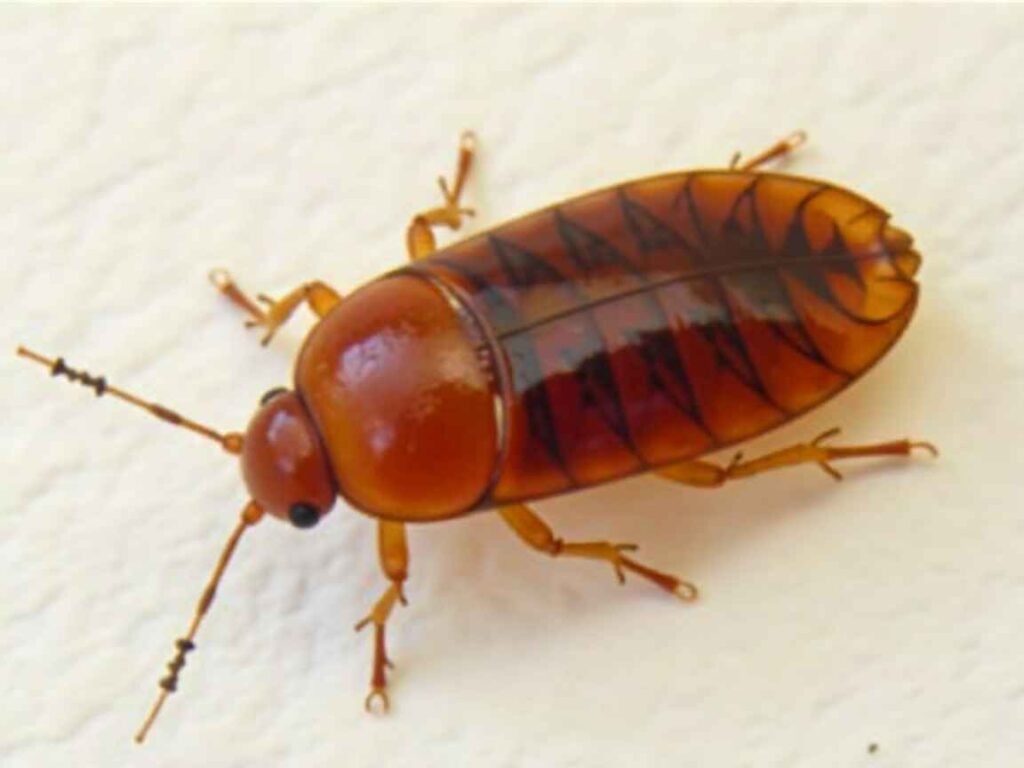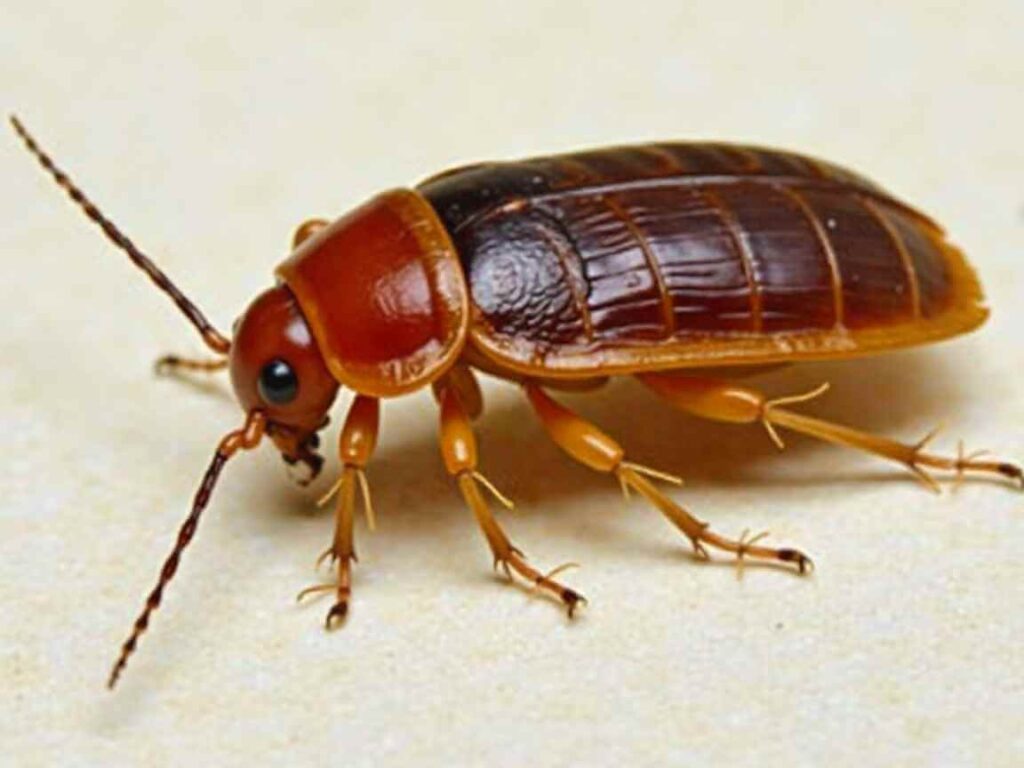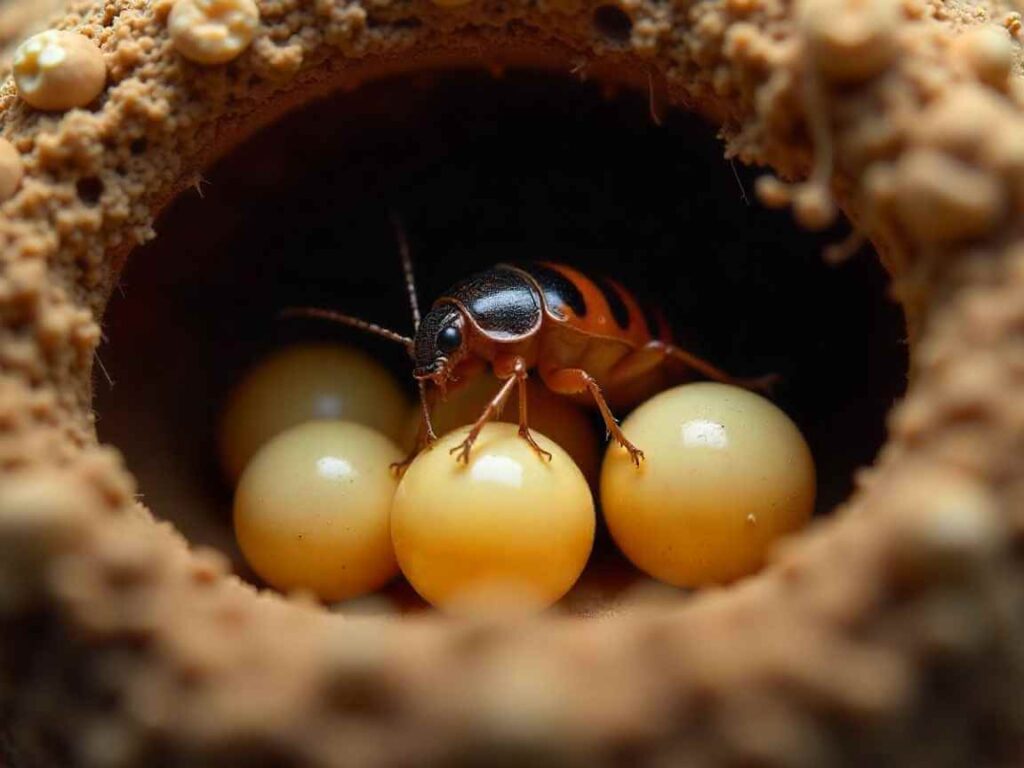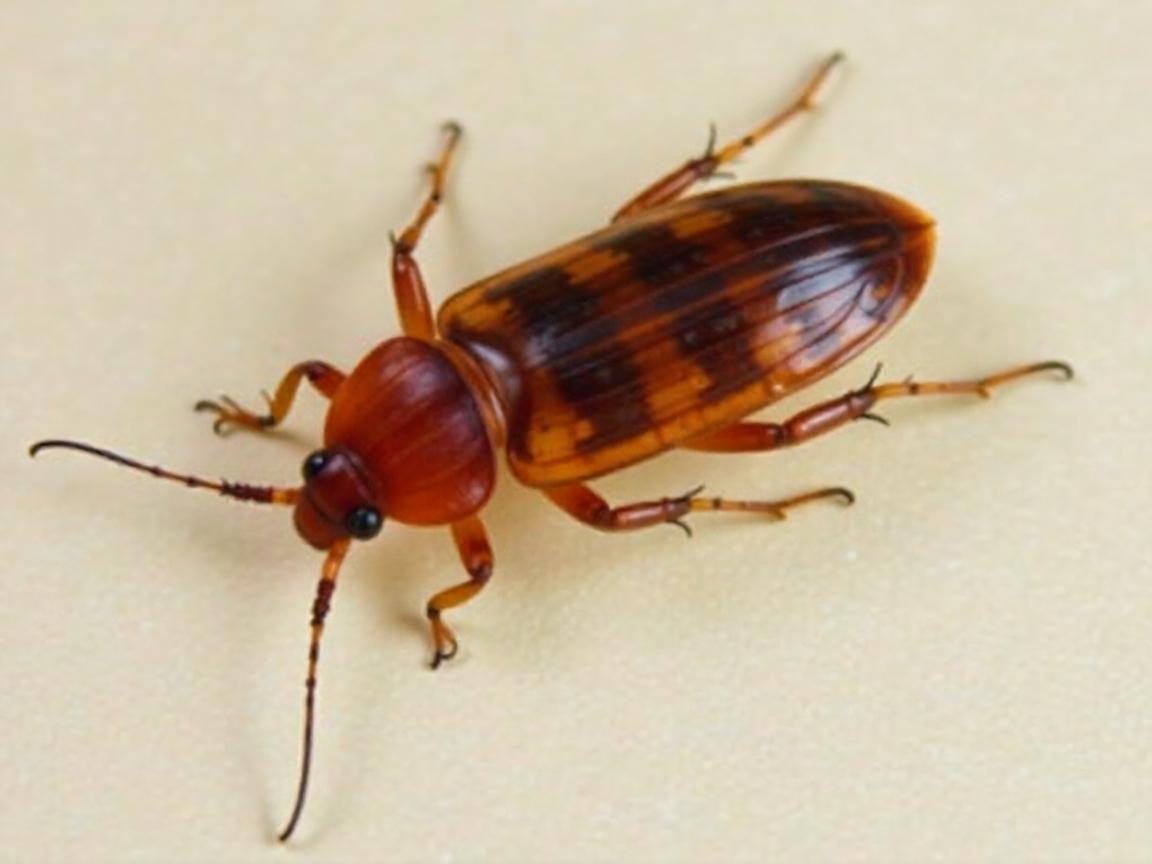Female cockroaches lay eggs inside protective cases called oothecae. These cases are made of hardened protein and shield the developing eggs. Knowing what cockroach eggs look like can help homeowners spot infestations early and respond quickly.
Different cockroach species lay eggs in different ways. Some carry their egg cases until the eggs hatch, while others leave them in safe places for the young to emerge.
Cockroaches often hide their eggs in protected spots such as small cracks, wall gaps, and tight spaces where they are less likely to be disturbed. Each species has eggs that differ in size, color, and number, so careful observation can help identify them.
Pest control professionals use special tools to find these egg cases, which helps them treat cockroach infestations of any size more effectively.
German Cockroach Eggs

German cockroaches are prevalent throughout the UK, appearing in homes, commercial buildings, and outdoor areas. (German Cockroach Identification in the UK: Appearance, Habits, and Risks, n.d.) These cockroaches retain their oothecae within their bodies until the eggs are ready to hatch. (Cockroach Egg Facts & Information, n.d.) Each egg case contains up to 50 eggs, contributing to this species’ rapid reproduction rate. (How Many Roaches Are in a Roach Egg Case?, n.d.)
Female German cockroaches make new egg cases every 3 to 4 weeks. (Guide to Cockroach Eggs: Size, Appearance, & Frequency, 2025) Their young grow into adults in about 36 days, allowing their numbers to increase rapidly.
German cockroach eggs are notably thinner than other species’ eggs. (FS1322: German Cockroach (Rutgers NJAES), n.d.) Nymphs require about 5 hours to break free from their capsules. (Timelapses of Cockroach Egg Cases Hatching!, n.d.) Initially white after hatching, nymphs darken within hours as their exoskeletons absorb oxygen. (Why Are Roaches Born White?, n.d.) Rarely, this color change fails to occur, resulting in adult albino cockroaches. (Albino Cockroach, n.d.)
American Cockroach Eggs

American cockroach eggs also develop inside oothecae, like German cockroaches, but each case can hold up to 90 eggs—almost twice as many as German cockroach cases.. (German Cockroaches vs American Cockroaches: Key Differences & Control, 2025) They are 9cm in length, displaying a brown color and elongated shape. (Cockroach Eggs: Pictures & Facts, n.d.) Nymphs require 6-8 weeks to develop sufficiently before leaving the ootheca. (Cockroach Management, n.d.)
American cockroach nymphs take longer to grow up than German cockroaches, needing 6 to 8 weeks to become adults. Each one sheds its skin 13 times before it is fully grown, a process that takes just over five months. (Madagascar Giant Hissing Cockroach, n.d.) On average, an American cockroach can have about 150 young in its lifetime.
Oriental Cockroach Eggs
Oriental cockroaches make egg cases one day after mating. (Oriental cockroach, n.d.) Their cases are darker than those of other species, typically black to brown. (Smokybrown cockroach, n.d.) Oriental cockroach eggs are a bit longer, measuring 10 to 12 mm, and each case holds about 17 eggs. (Oriental Cockroach Nymphs: Life Cycle From Eggs to Adults, n.d.)
The eggs start out light yellow, turn red, and then become dark brown before they hatch. (Why are roaches born white?, n.d.) Temperature has a big effect on how fast they develop. Oriental cockroach eggs cannot survive below 0°C (32°F). (Patourel & G., 1995) The best hatching happens at 29.5°C (85°F), with young emerging after 42 days. (University of California, Riverside Integrated Pest Management Plan, n.d.) At cooler temperatures, around 21°C (70°F), it takes about 81 days for them to hatch. (Oriental cockroach, n.d.)
Brown-Banded Cockroach Eggs

Brown-banded cockroaches are found throughout the United Kingdom and are known for their unique sex pheromones, which have piqued the interest of scientists. Being able to spot their eggs helps with managing infestations.
Brown-banded cockroach egg cases are light red and brown, and are significantly shorter than those of other species, measuring approximately 5 mm in length. (Cockroach Identification Chart, n.d.) Each female produces approximately 20 egg cases in her lifetime, with around 15 eggs in each. (Smokybrown Cockroach Eggs: Appearance & Identification, n.d.)
You can recognize brown-banded cockroach nymphs by the yellow bands on their upper bodies. (Brown-Banded Cockroaches Identification & Color, n.d.) They take 3 to 6 months to become adults, depending on factors such as temperature and the availability of food. (Pest Control Procedures Manual, n.d.)
Female brown-banded cockroaches carry their egg cases for just 1 or 2 days before finding a safe place to attach them.
Madagascar Hissing Cockroach Eggs
Female Madagascar cockroaches keep their eggs and egg cases inside their bodies while the young develop. (Madagascar Hissing Cockroaches: Information and Care, n.d.) The nymphs feed on the egg case as they grow, which helps them become large enough to survive once they leave their mother.
The egg cases of Madagascar cockroaches are flat and can be as long as the adult cockroach. (Cockroach Eggs | Where Do They Lay Eggs and Sizes, n.d.) Each case usually holds no more than 60 young.
Madagascar cockroaches do not lay their egg cases outside like other species. (Madagascar hissing cockroach | Oregon Zoo, n.d.) Instead, the female sometimes exposes part of the egg case to air, then pulls it back inside her body until the young are ready.
When the nymphs are fully developed, they come out of the female’s body as live young instead of hatching from an egg case left outside.
Where Do Cockroaches Lay Their Eggs?
Most cockroach species lay their eggs in safe places where there is enough air. Common spots include:
- Small crevices and gaps
- Wall cracks and fissures
- Areas behind or near appliances
- Inside plumbing pipes
- Within food waste accumulations
These places keep the eggs safe from predators and make sure the young cockroaches have what they need to grow.











